The Brandsider decodes how brands build belonging. Subscribe for 5-minute case studies and strategy playbooks delivered every Thursday.
October 17, 2025 | Edinburgh, UK
I should probably start packing for our very (very) early train up to the Cairngorms tomorrow morning. We’re spending a few days in a cabin with my parents, and I can’t think of a better fall Scottish getaway.
The timing is particularly fitting. I need a few days of respite before throwing myself into an intense next phase of growth for The Brandsider.
As you know, I’ve spent the last few weeks (months?) deep in reflection and strategy mode. First I nailed The Brandsider’s brand positioning and POV — on belonging and insider brands. Now I’ve been tackling the (arguably harder) question:
How can I design a business with belonging at its core?
That’s exactly what I want to explore in this week’s newsletter — along with an inside look at what’s next for The Brandsider. I hope this playbook will be helpful to anyone else building an insider brand.
Let’s get into it.
Tamara
In today’s newsletter → Graza’s olive oil subscription model, Hermès’ path to a Birkin, and Notion’s co-creation marketplace
(P.S. my 2025-Q4 playlist is now live — aka what I’ve been listening to whilst building this.)
Business vs brand-building
Since launching The Brandsider last November, most of my time has been spent on brand-building — shaping the tone, visual universe, standards, and positioning. (No mom, I wasn’t just posting videos on Instagram!!)
However, my real priority since leaving my full-time role has been much more tactical: to design a business model that allows me to work on this sustainably. In other words:
How can I make money from this in a way that fuels my long-term ambition — not just the next 6 months?
Custom consulting and sponsored videos are great short-term plays, but they can’t scale beyond me, create real leverage, or ensure longevity (my no. 1 driver).
At the same time, I’ve invested so much into brand-building that I don’t want to shill a ‘good enough’ product or service. I want to create a world so clear, so magnetic, that insiders don’t think twice about stepping deeper into it.
Don’t you?
Designing for belonging
For a brand strategist, this requires a shift in mindset.
We’re no longer talking about building an immersive brand world (step 3 in the Flywheel of Belonging), but baking belonging into the monetization architecture itself.
Into the business model, the product, the pricing. AKA, we’re putting my business degree to good use.
And from my observations and firsthand experience, I believe businesses built on belonging share three core design principles:
Repeatable rituals
Tiers of commitment
Participatory loops
1. Repeatable rituals
Belonging isn’t built from one-off products.
To make people feel like insiders, brands need a repeatable, reliable way to engage with their customers. This can be a purchase, a product, or a content cadence — but it must be atomic enough for customers to come back to it again and again.
Consistency is key: it has to be the same thing every time. When people know what to expect, they begin to anticipate it, participate in it, and depend on its delivery.
For example:
Take Graza, the beloved olive oil DTC brand. You’ll notice the business doesn’t encourage one-off purchases. The default is a subscription model, where insiders are invited into a monthly ritual of anticipation, arrival, unboxing, and online sharing.
This doesn’t just build belonging — it also creates a more sustainable monthly recurring revenue (MRR) base, funding new products, collaborations, and expansion. Belonging 🤝 Business model.
You can also think of:
The New Yorker’s monthly issue and collectible cover
Starbucks’ once-awaited seasonal menus (PSL, anyone?)
Peloton’s membership app and daily class selection
For The Brandsider:
Moving forward, my core repeatable ritual will be the Thursday Strategy Dossier — a weekly 5-minute case study decoding how the world’s most magnetic brands build belonging.
I’ve loved writing these longer, more editorial pieces. But they change too much week to week to be truly atomic. I want readers to know exactly what they’re getting every time: sharp, timeless brand analysis that compounds into a modular body of work.
Ironically, this was one of my very first iterations of The Brandsider. Check out my Veuve Clicquot Strategy Dossier for reference.
If you’ve enjoyed my case study videos, this will be right up your alley.
2. Tiers of commitment
True insiders feel like they’ve earned their place.
It’s not enough to drive regular engagement; customers also need ways to go deeper. Not just in the conceptual brand world, but in how they invest in it.
In a belonging-driven business model, that means creating a ladder of participation: a structure that lets people move from light engagement to meaningful investment. Each tier gives insiders new ways to demonstrate commitment — with their time, attention, or money — while unlocking increasing value in return.
From a business standpoint, this structure creates resilience. When participation deepens, so does revenue quality: higher retention, higher LTV, and lower acquisition dependence.
For example:
Few brands illustrate tiers of commitment better than Hermès. You can’t simply walk in and buy a Birkin. Entry begins with smaller purchases — a silk scarf, a bracelet, a fragrance — and evolves through a relationship built over time with a sales associate. Only then are you invited into the upper tiers of access.
This isn’t just exclusivity for its own sake. It’s a business model engineered around progression and scarcity. The deeper your relationship, the higher your spend — and the closer you move to the brand’s inner circle.
Other examples include:
Tesla’s software-based upgrades
Amex’s invitation-only Centurion Black Card, earned through spend
Apple’s layered ecosystem of hardware and services, deepening lock-in with every purchase
For The Brandsider:
From day one, The Brandsider’s target niche has been brand-builders. But instead of forcing myself into a single ICP, I’ve accepted that the platform can and should serve two types of brand-builders:
Executives and founders — the people building brands from the top.
Marketers and professionals — the ones shaping them from within.
My business model reflects that dual audience, giving both types an opportunity to go deeper in the way that’s most valuable to them.
For B2B: I’m developing a suite of brand strategy tools and productized advisory offerings that help leaders codify belonging inside their organizations.
For B2P*: I’ll (eventually) be launching an Insider membership — a paid layer where readers can access proprietary frameworks, extended research, and a community of brand-builders.
Both paths serve the same mission: helping brand-builders leverage belonging as strategy.
*B2P = business-to-professional
3. Participatory loops
Belonging solidifies when transparency turns into participation.
The most resilient businesses don’t just show what they’re building — they let people play a part in building it. Transparency creates context; participation creates commitment.
When insiders can see how the system works and influence its direction, they move from audience to ally — not just emotionally, but economically. They stay longer, spend more, and make the experience better for those who follow.
For example:
Few brands capture this better than Notion. The company takes a transparent approach — with public release notes, an open template marketplace, and active creator community that constantly expands what the platform can do.
Insiders know how the system works, which makes it natural for them to build within it. Every new template or tool adds value for the next user, creating a network effect that strengthens the product, the business, and the customer relationship.
Also consider:
On’s Cyclon™ circular recycling subscription
LEGO Ideas, where fans submit and vote on creative concepts
Glossier’s community engagement, giving customers a voice in shaping product decisions
For The Brandsider:
I’ll continue sharing how I’m building The Brandsider in real time. But instead of ad-hoc updates, I’ll be sending a monthly Sunday newsletter — Side of Desk — a structured recap of my lessons and principles, much like what you’re reading now.
I’ll also be returning to Instagram Stories, where I love posting polls and sneak peeks. I haven’t done that in a hot minute while figuring all this out, but I’m so excited to get back on that train.
Parting thoughts
Starting next week, we’ll be launching the first product on my roadmap: the weekly Strategy Dossier. A study of Byredo has been in the cards for a long time, and I can’t wait to share my analysis with you.
It’s an exciting time. We’re stepping into the next chapter for The Brandsider: not just decoding belonging, but building it in real time — in the brand, the content, and the business model itself.
Thanks for following along - and talk soon.
xo,
The Brandsider



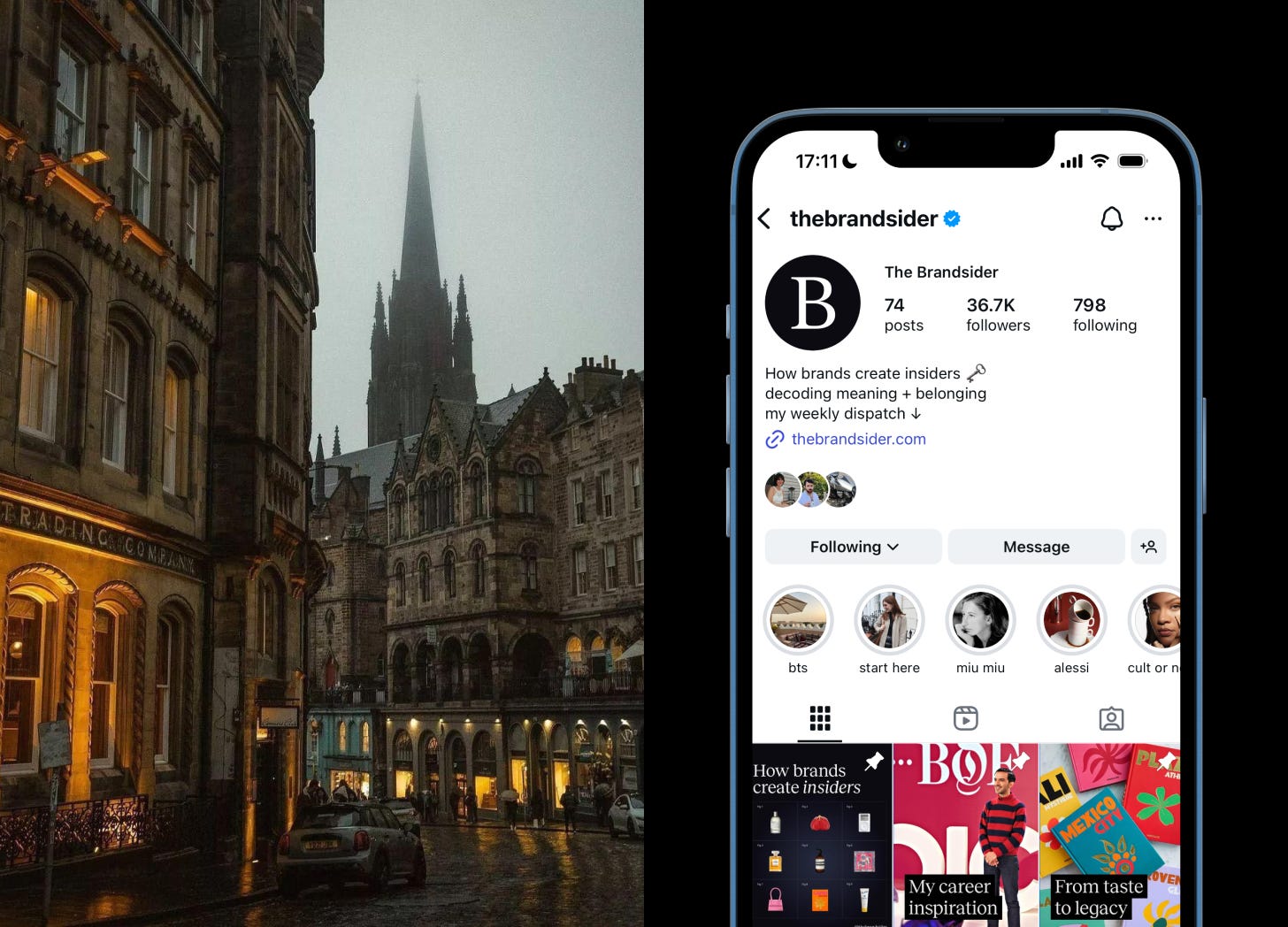
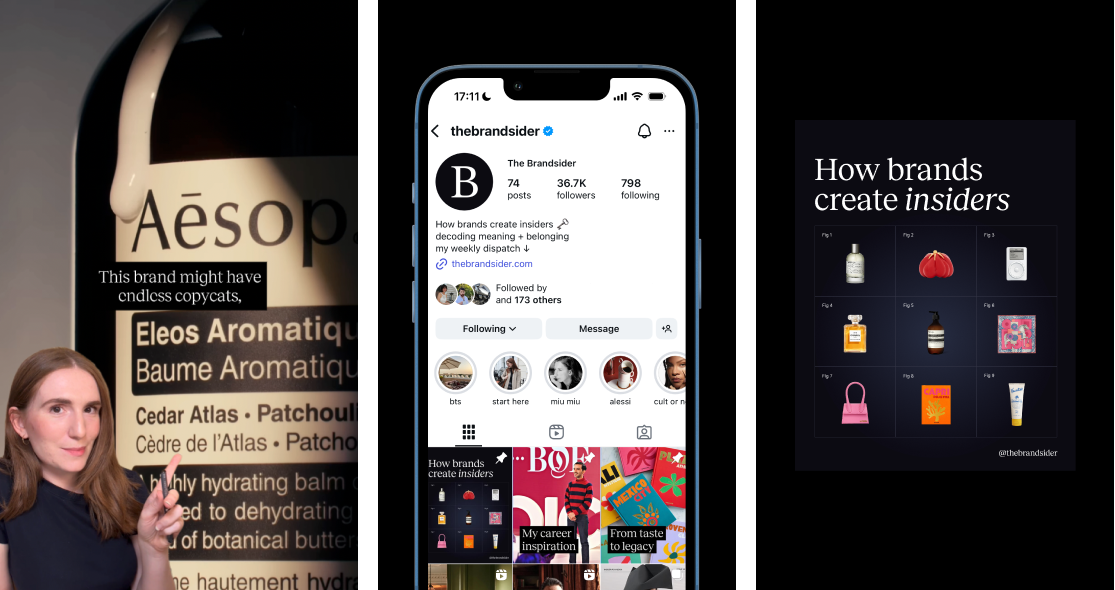
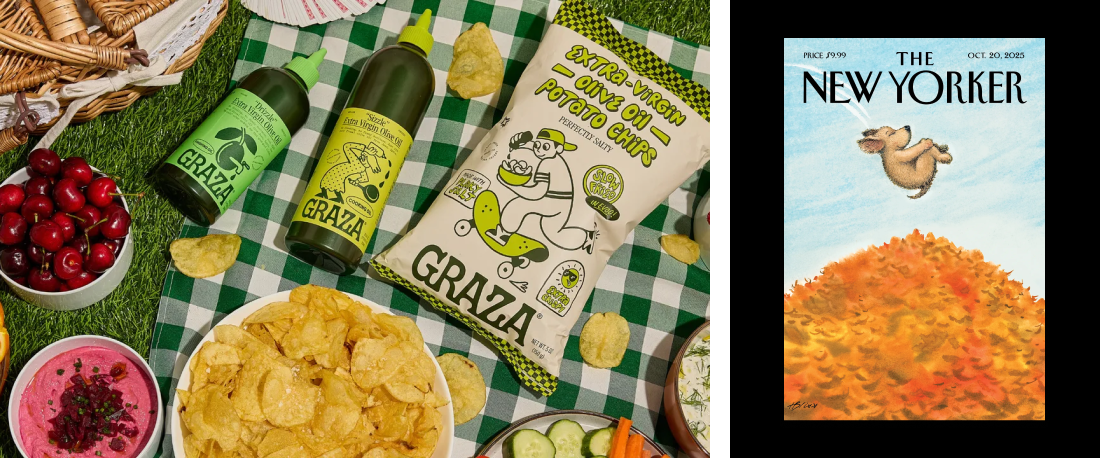
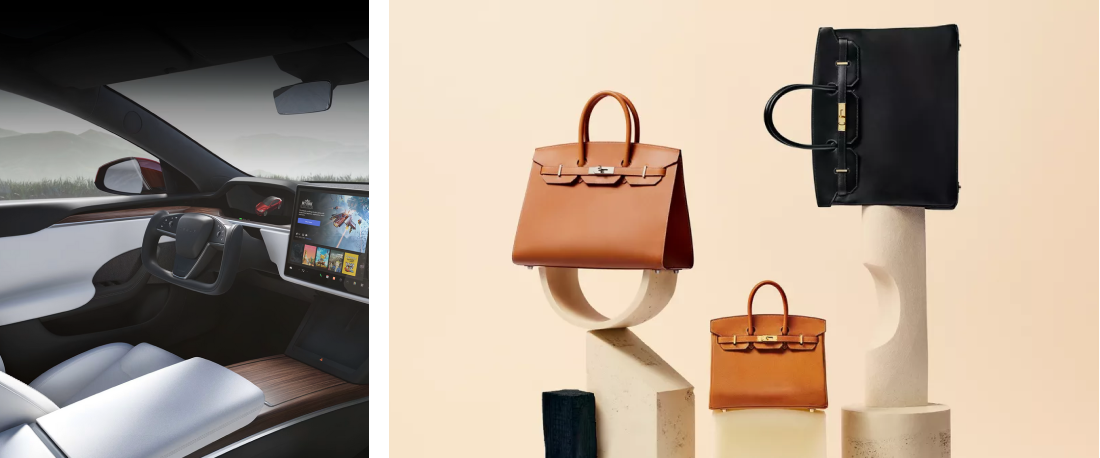
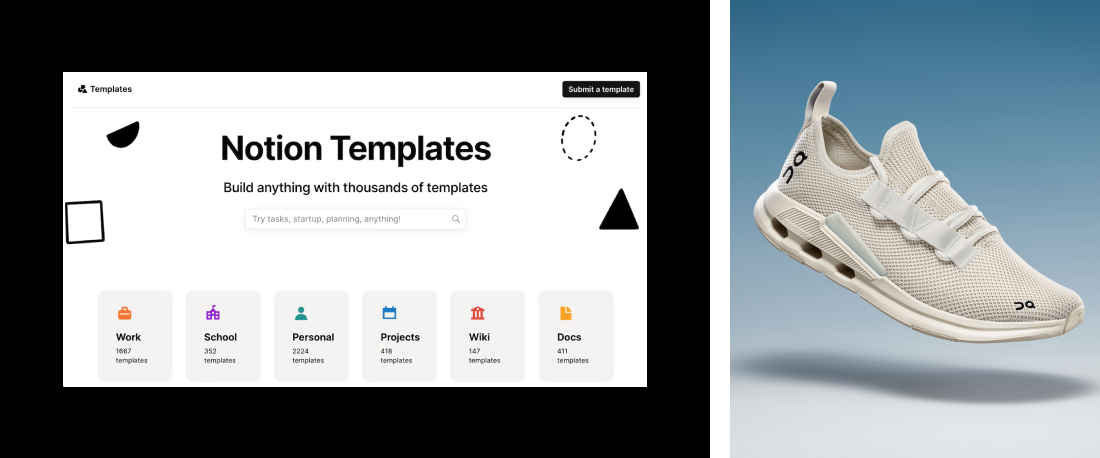
As a foodie I got very excited when I saw this newsletter would talk about Graza’s olive oil subscription model. This was an awesome read. Can't wait to read the new weekly Strategy Dossier!
This is so great! Excited to see what’s coming next!